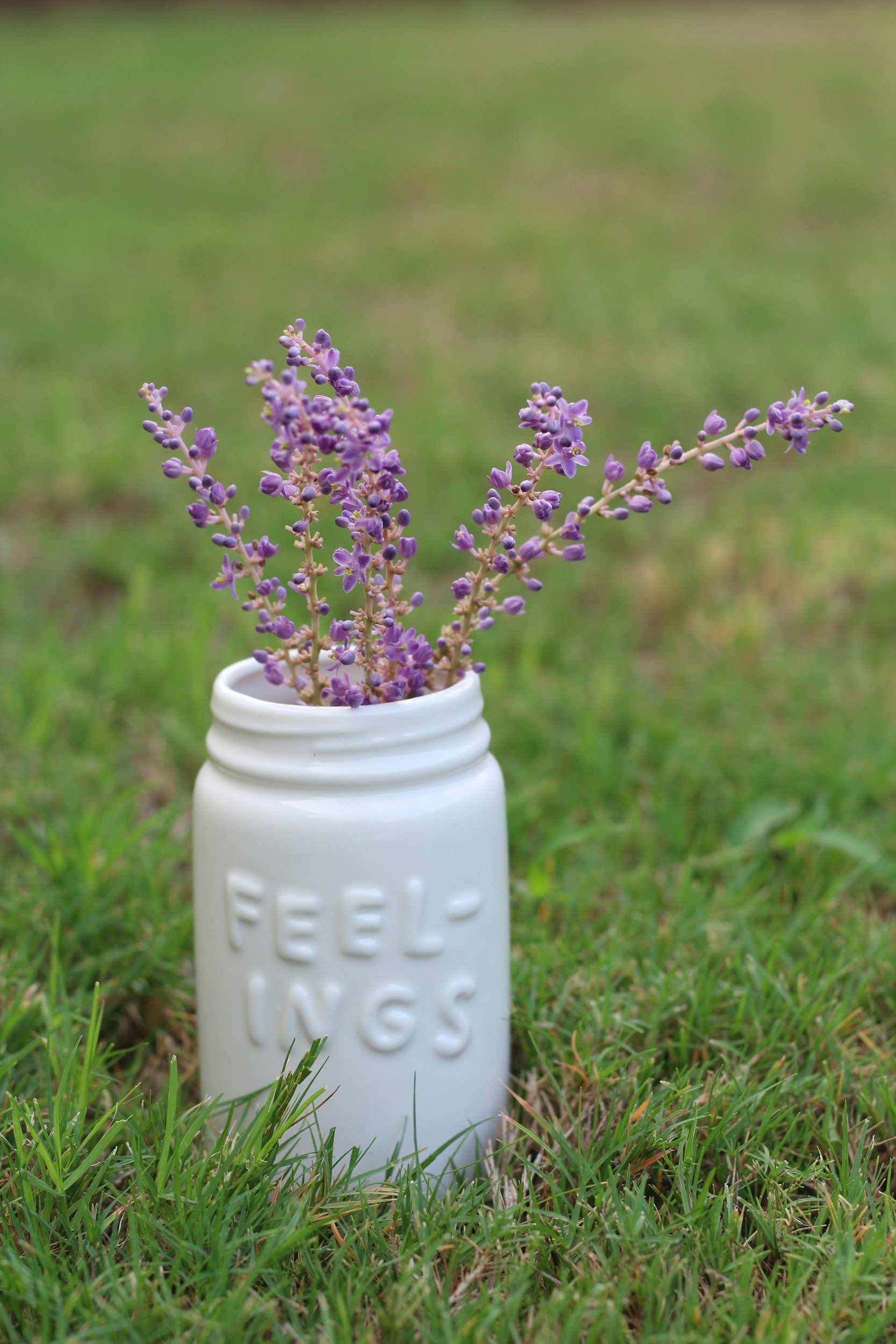Creating emotional awareness and acceptance builds self-trust and creates opportunities to become more emotionally regulated. This in turn creates a healthier mind and body. Emotional awareness can be very challenging, especially if you’ve spent a lot of unconscious energy suppressing your emotions.
Many of us learned early on that our emotions are a problem, a nuisance, or even that they are wrong or bad. Many people feel that they did not learn how to create emotional awareness within themselves and were even rewarded for denying their emotions. While caretakers, teachers, or other people who influence our lives from a young age may not set out to cause harm, not being able to identify, sit with, express, and release our feelings ends up causing harm in some form at some point in our lives.
If you have gotten really good at denying, avoiding, numbing, or suppressing your feelings, I want you to know that it is possible to, with time and practice, create emotional awareness and acceptance. There are many feelings wheels out there that are very helpful; however, I recommend starting with the BLAST method. (BLAST stands for Bored, Lonely, Angry, Stress, Sad, or Tired). This is a simple way to practice getting in touch with your emotions by naming your feeling first.
When practicing the BLAST method, you first need to create time and space to encourage the process of going inward. This is where it is vital to learn how to pause. Having a consistent time to practice taking a pause can be helpful to make it a part of your routine. You can check in with yourself by pausing before starting your day, before eating, before opening up your phone to scroll, before sending that email… During the pause, ask yourself, “Am I Bored, Lonely, Angry, Stressed, Sad, or Tired?” This opens you up to emotional awareness and reflection. Again, there are a ton of other emotions and feeling states that exist, however, these few tend to touch on some common uncomfortable emotions that drive behavioral denying, avoiding, numbing, or suppression of emotions.
Once you name an emotion, you can begin to tame it. Once you allow yourself to feel the feeling, you can begin to heal and release the feeling. Practicing the BLAST method is where to begin with emotional awareness. Once you bring the feeling state into your awareness, you can now practice emotional acceptance. This can get tricky depending on your personal relationship with your internal emotional world. This can be helpful to do with a therapist if you’ve experienced emotional disconnect for a long time and if you’ve had invalidating experiences that reinforced the negative messaging that your emotions are wrong, bad, inconvenient, or problematic. Emotional acceptance is about validating that your feelings are real and determining how congruent your feelings are with your present experience. You can then determine how to manage and cope as effectively as possible.
Emotional acceptance is nonjudgemental; it allows the emotion to just be, to not be labeled as good or bad, positive or negative; it just is. All emotions provide valuable messages about our internal experience. Then you can explore why it is there in the first place. Practicing the BLAST method allows you to determine in a general way what you are feeling. Once you’ve identified it, you can get curious about why it’s there. If you feel that you can name your feeling state from any of the emotions from the BLAST method, (Bored, Lonely, Angry, Stressed, Sad, or Tired) ask, “Why am I feeling this way?” When getting going with this work of emotional awareness and emotional acceptance, it can be helpful to journal - like a lot. Journaling increases your awareness, the ability to practice emotional acceptance, as well as your ability to validate your own unique emotional experiences. Journaling is a very valuable process of releasing your emotions and is a helpful way to cope.
To fully release the feeling, it’s helpful to understand why the feeling is there, then to consider what it might need. Starting with naming it, and then exploring the why behind it. With journaling, practice, and consistency, you’ll begin to create more space for emotional acceptance. When you can accept a feeling state for what it is and understand why it’s there, you can then choose how to manage this emotion. I’ll be breaking down each of the emotions from the BLAST method within the next several blogs, so stay tuned. Until then, practice naming and getting curious about why it’s there in the first place - without judgement. This is where you can lean into emotional acceptance which promotes self-acceptance, self-worth, and self-love.



